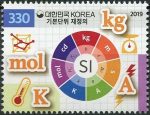Norway in northwestern Europe is one of our homeschool countries-of-the-week, so why not spend a few minutes today with your students learning about one of Norway’s World Heritage Sites: the Prehistoric Rock Art of Alta.
![[Homeschool World Heritage]](https://upload.wikimedia.org/wikipedia/commons/thumb/0/08/RockCarvings_in_Alta.jpg/1024px-RockCarvings_in_Alta.jpg)
The Alta rock carvings were first discovered in 1973, and since then more than 6000 have been identified in the surrounding region:
The property is situated in the northernmost part of Norway, far north of the Arctic Circle at the head of the Alta Fjord. It contains thousands of rock carvings and paintings located at 45 sites in five different areas at the head of the Alta Fjord (Kåfjord, Hjemmeluft, Storsteinen, Amtmannsnes and Transfarelvdalen). More rock art made by hunter-gatherers is found in Alta than anywhere else in northern Europe. This seems to indicate that for thousands of years, from approximately 5000 B.C. to about the year 0, Alta was an important meeting place far north of the Arctic Circle. The development of carvings in Alta through thousands of years can be related to the post-glacial land upheaval. The oldest carvings are found at the highest points of the landscape. In Alta the changing landscape of prehistoric times is evident, and the position of the carvings also provides a key to understanding the chronology of rock art in the circumpolar region.
The Rock Art shows communication between the world of the living and the worlds of the spirits, and gives insight into the cosmology of prehistoric hunters and gatherers. There is an exceptionally high number of human figures and compelling portrayals of prehistoric social life, dancing, processions, and rituals. Moreover, the Rock Art provides a unique testimony to the interaction of hunter-gatherers with the landscape. The panels show hunting, fishing and boat journeys, and are thought to represent micro-landscapes. A wide range of circumpolar fauna is depicted (reindeer, elks, bears, fish, whales, seabirds, etc.). Studies of material culture are enriched by the many different artefacts shown on the Alta panels. Good preservation conditions permit the study of rock art production.
Investigation of the large settlement sites adjacent to the carvings gives a better understanding of the social context of the Rock Art. The Rock Art and the settlement sites demonstrate communication in prehistory with areas thousands of kilometres away. (World Heritage Centre #352)
You can find a gallery of additional photos of the Rock Art of Alta on the World Heritage Centre’s website.
![[Homeschool World Heritage]](https://upload.wikimedia.org/wikipedia/commons/thumb/8/81/AltaRockCarvingsMuseum.jpg/1024px-AltaRockCarvingsMuseum.jpg)
World Heritage Sites are cultural or natural landmarks of international significance, selected by their home countries and recognized by the United Nations Educational, Scientific, and Cultural Organization. More than a thousand such sites have been designated in over 160 countries, and we feature one every Wednesday, drawn from one of our homeschool countries-of-the-week. You can find a complete list of World Heritage Sites online at the World Heritage Centre’s website and in Wikipedia.
The World Heritage Centre also has a free and comprehensive World Heritage education kit for teachers, as well as a wonderful full-color wall map of World Heritage Sites, available for the cost of shipping. Why not add them both to your own homeschool library. 🗺
What world treasures are you and your students exploring in your homeschool this Leo Term? 🇳🇴
❡ The great globe itself: This is one of our regular Homeschool Geography posts featuring cultural and natural sites of international importance. Print your own copy of our River Houses World Heritage Calendar and follow along with us as we tour the planet, and add your name to our weekly mailing list to get great homeschool teaching ideas delivered right to your mailbox all through the year. 🌐
❡ Print this little lesson: Down at the bottom of this post you'll find a special "Print" button that will let you create a neat and easy-to-read copy of this little lesson, and it will even let you edit and delete sections you don't want or need (such as individual images or footnotes). Give it a try today! 🖨
❡ Books in the running brooks: You can always turn to your River Houses almanac, atlas, and history encyclopedia for more information about any of our countries-of-the-week. The almanac has a lengthy section with detailed profiles of all the nations of the world; the endpapers of the atlas are indexes that will show you where all of the individual national and regional maps may be found; the history encyclopedia has a comprehensive collection of national histories in an appendix; and you can find additional illustrations, flags, and other mentions through the indexes in each of these volumes. For an ideal little lesson, just write the name of the Weekly World Heritage Site on your homeschool bulletin board, find its location in your atlas, read the WHC's brief description aloud, look at a picture or two, and you're done. Over the course of the year, without even realizing it, your students will absorb a wealth of new historical, geographical, and cultural information. 📚
❡ Homeschool calendars: We have a whole collection of free, printable, educational homeschool calendars and planners available on our main River Houses calendar page. They will help you create a light and easy structure for your homeschool year. Give them a try today! 🗓
❡ Support our work: If you enjoy our educational materials, please support us by starting your regular Amazon shopping from our very own homeschool teaching supplies page. When you click through from our page, any purchase you make earns us a small commission at no extra cost to you. Thank you for helping us to keep going and growing! 🛒
❡ Join us! The aim of the River Houses project is to create a network of friendly local homeschool support groups — local chapters that we call “Houses.” Our first at-large chapter, Headwaters House, is now forming and is open to homeschoolers everywhere. Find out how to become one of our founding members on the Headwaters House membership page. 🏡




